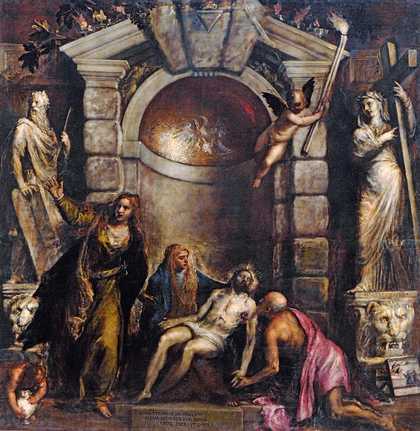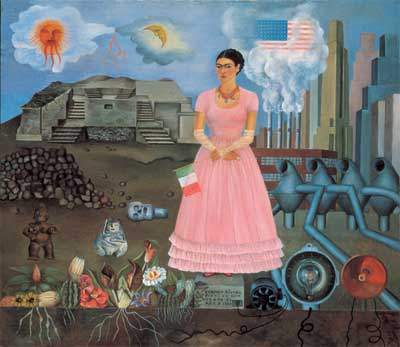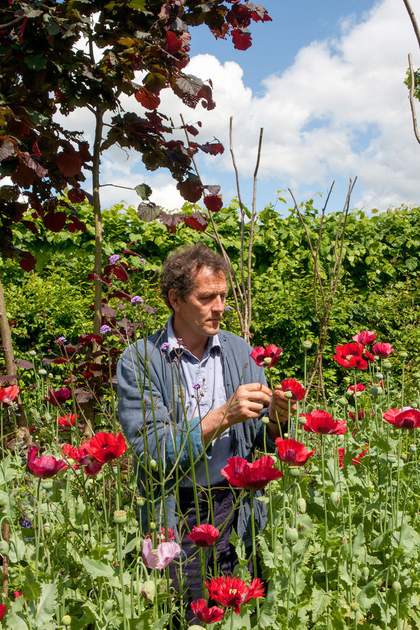
Titian’s Pietà 1576, his last painting, was created while Venice was struck by a plague that killed almost a third of the population, including the artist himself
Classicpaintings / Alamy Stock Photo
Out of terrible times can come great art. From the 14th to the 17th century, Europe was a continent haunted by plague as repeated outbreaks of the Black Death devastated communities, sowed fear and caused suffering for many. Yet it was also a period of cultural reawakening, represented most vividly by Renaissance art, and a roll call of sculptors and painters that we still look to today for beauty, inspiration and exquisite technique: Da Vinci, Michelangelo, Titian, Tintoretto, Raphael – the list goes on. Much of Shakespeare’s writing, too, was produced against a backdrop of intermittent outbreaks of plague in England that saw the deaths of friends and the closures of theatres. Later, the Great Plague of London (1665–66) would inspire Daniel Defoe’s 1722 novel, A Journal of The Plague Year.
In more recent history, we can see other creative responses to adversity and isolation, some the result of war and disease, others due to personal illness. The brief but devastating Spanish flu pandemic of 1918 took the life of the young Austrian painter Egon Schiele, but not before he sketched his friend and mentor Gustav Klimt, and his own wife Edith, as they both succumbed to the influenza. The disease also seeped into the writing of Virginia Woolf, who noted in a diary entry on 20 October 1918 that the world was ‘in the midst of a plague unmatched since The Black Death’. In her 1925 novel, Mrs Dalloway, set just after the end of the First World War, the book’s protagonist Clarissa Dalloway has recently recovered from the virus. Woolf’s classic portrayal of isolation in the midst of modern life reflected her own inner loneliness; others, such as the Mexican painter Frida Kahlo, had isolation thrust upon them due to ill health. Aged 18, Kahlo was confined to her bed for months after an accident left her unable to walk; in later life, following a failed operation on her spine and subsequent declining health, her many great self portraits – including later more political works – were painted in seclusion.

Derek Jarman’s final film Blue 1993 was produced as the artist was nearing death from AIDS-related illnesses
© Basilisk Communications Ltd, 1993
Creativity, then, can spring from the worst of situations. Works in the Tate collection reveal the many different ways that visual artists have responded to adversity and periods of isolation, whether physical, emotional or a combination of the two. While created in a range of media, and responding to a variety of very different circumstances, these artworks ripple with fortitude and strength – and sometimes rage. Think, for example, of Derek Jarman’s final film, Blue 1993, made as he was nearing death from AIDS-related illnesses, its static blue screen representative of his fading eyesight, the voice-over and soundtrack a meditation on silence and mortality. Or the oddly moving vulnerability of Alice Neel’s nude, Ethel Ashton 1930, painted by the then-destitute artist who described her life at the time as ‘terrible’. More powerful still, in its fragile simplicity and allusion to family, shelter and collapse, is Donald Rodney’s photographic work In The House of My Father 1996–7, featuring a tiny sculpture of a house made from the artist’s own skin and resting in the palm of his cupped hand. Rodney was ill in hospital when it was made, his father having died in 1995. The artist himself, who suffered from sickle cell anaemia, died in 1998, aged just 36.
What kind of art can we expect to emerge from the grim period of social distancing and premature deaths caused by the Covid-19 pandemic? Paradoxically, the closing of exhibitions and artists’ studios, and the hunkering down in our homes, could prove to be a catalyst for more community-focused, participatory work. It’s an already well established trend, of course: high-profile advocates include the Cuban artist and activist Tania Bruguera, whose 2018–19 Turbine Hall commission involved Tate Modern visitors in a ‘community-driven response’ to the international migrant crisis. Yet the magnitude of this new disease, and the way that its impact goes way beyond our health to strike at the very heart of our social and economic fabric, suggests that there will be major and profound changes for the art of the future.
The many artists’ responses on social media provide an early insight into what kind of art may emerge in a post pandemic world. Rather than retreat into the private and personal, mutual support networks have emerged and skills have been shared. The social value of art in our everyday lives has been a major theme – as the world teeters, artists are speaking with seriousness and responsibility, but also with joy at the role that art can play in challenging, questioning and celebrating our world. We are all being changed by the impact of Covid-19 – and that means art will surely change too.
Chris Sharratt is a writer and editor based in Glasgow.



